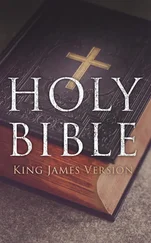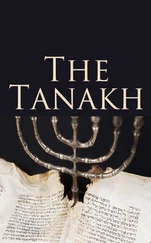b1MISHNA b . This Mishna is explained by Maimonides and translated by Yost in a different manner than we have rendered it; namely: "All utensils found wrong side up on the way to the plunge-bath are unclean, and those found right side up are clean." This p. 34 explanation is very complicated, and not in accordance with the literal text and other sources of explanation. Hence we simply translated the literal text and deem it correct. As for the last three articles, they are always unclean, on account of being used for bones of the dead; hence, in our opinion, they were never submerged. (See also commentary of Israel Lipshuetz, who also interprets it according to our explanation.)
c1MISHNA c . A butchering-knife, being in constant use, is always considered clean, and hence there is no necessity of submerging it. If, however, it be found on the thirteenth, when there is still one day's time, it should be submerged for the sake of precaution. A severing-knife, however, is considered the same as any other vessel, and is treated accordingly.
d1MISHNA d . For the explanation of the term "minor uncleanness," as used in this Mishna, it is necessary to state the different degrees of uncleanness, which are as follows: A corpse is called "the grandparent of uncleanness." One who touches a corpse becomes "a father of uncleanness"; anything touching the latter is, in turn, "a child of (or first of) uncleanness"; anything touched by this latter is a "second of uncleanness"; and so forth, "a third" and "a fourth." (See Tract Taharoth.) In this Mishna a minor uncleanness refers to a first of uncleanness, and a principal uncleanness to a father of uncleanness.
e1MISHNA e. The Palestinian Talmud asserts, that the amount of the cost of and the number of priests required to submerge the curtain is somewhat exaggerated; but, according to Dr. Büchler's "Priester und Cultus," the number of priests is not an exaggeration; and as for the cost, if the smallest existing coin be used for calculation (as in former times the sou in France, so also was the myriad mentioned in the Mishna), not even the sum will be exaggerated.
f1MISHNA f . For instance, the meat of the sacrifice mentioned in Leviticus vii. 6.
h1MISHNA h. This will be explained in Tract Midoth.
h2Because the Levites received their sustenance from this source, and having inherited no land from their ancestors, they were p. 36 supported even after the destruction of the Temple by the same means. The details will be found in Tracts Becharath, Maasroth, etc.
INTRODUCTION TO TRACT ROSH HASHANA (NEW YEAR'S DAY).
Table of Contents
NOTWITHSTANDING the fact that in the history of every nation, especially such as has ever attained to an established form of government, the calendar is a matter of great importance, the Scriptures do not in any manner treat of the Jewish calendar. There cannot even be found a fixed time whence the commencement of the year should be reckoned, although there is this passage in Exodus (xii. 2): "This month shall be unto you the chief of months: the first shall it be unto you of the months of the year." Doubtless this may be assumed to point to the month of Nissan (about April), as not only the most important month, but also as the beginning of the year.
In another passage (Exod. xxiii. 16), however, we find it written: "And the feast of ingathering (Tabernacles), at the conclusion of the year." This would be a palpable contradiction to the previous passage, were it not for the fact that the words " Betze'th Hashana " (rendered as "at the conclusion of the year") in the quoted passage can be, with perfect accuracy, translated "during the year." While such a translation would clear away all doubt as to Nissan being the beginning of the year, it could under no circumstances be applied to the Feast of Tabernacles, which is neither "at the conclusion" of the year nor "during the year" (in the sense "when the year has advanced"), if the beginning of the year be Tishri (about September). Hence the passage should be translated: "And the feast of the ingathering, which had been completed at the conclusion of the year"; i.e. , in the months preceding the month of Tishri.
In the face of these contradictory terms, we must revert to historical facts which would support one or the other of the above assertions, and we find, that not only the Egyptian rulers, but also the Jewish kings since the time of Solomon, counted the beginning of the year of their accession from the month of Nissan, while other Eastern potentates, such as the Armenian and Chaldean kings, counted the commencement of their year of accession from Tishri.
It is not certain whether the Israelites, after their conquest of Canaan, computed their calendar in conformity with that of the country whence they came or with that of the country they had conquered; but it is plain that in the Mishnaic period, or after the erection of the second Temple, they counted the beginning of the year from Tishri. It may be, however, that their kings, following the example of their predecessors, commenced counting the year of their accession from Nissan, and in all civil contracts and state documents, according to the existing custom, used dates to agree with Nissan as the first month of the year.
On the other hand, the priestly tithes, during the days of the erection of the second Temple, were payable in Elul (about August), which was considered the expiring season of the year, in order to prevent the confusion which might arise from mixing one year's tithes with those of the other. The priestly tithing of fruits was, however, delayed until Shebhat (about February), the time when the fruits had already matured on the trees, in order that the various tithes should not be confused and to prevent the priests and Levites from unduly interfering with the affairs of the people.
The prehistoric Mishna, which always formed the law, in conformity with the existing custom, and not vice versa , 1found four different New Year's days in four different months, and, with the object in view of making the custom uniform in all Jewish communities, taught its adherents to observe four distinct New Year's days, at the beginning of the four respective months in which certain duties were accomplished. Thus the text of the opening Mishna of this tract, prior to its revision by Rabbi Jehudah Hanassi, read as follows: "There are four different New Year's days; viz., the first day of Nissan, the first of Elul, the first of Tishri, and the first of Shebbat." The different purposes for which these days were established as New Year's days were well known at that time, and it was therefore deemed unnecessary to specify them. At the time of the new edition of the Mishna, by Rabbi Jehudah Hanassi (the Prince), when the Temple was out of existence, and consequently tithes were no more biblically obligatory (the authority of the priests having been abrogated and reverted to the house of David, the great-grand father of the editor), the latter referring to the first day of Nissan and the first day of Elul as New Year's days, added, by way of commentary, the words, "for kings and cattle-tithe."
He also cited the opinions of R. Eliezer and R. Simeon, that the New Year's Day for cattle-tithe should not be celebrated separately, but on the general New Year's Day; viz., on the first day of Tishri, as under the then existing circumstances there was no necessity to guard against the confusion of tithes accruing from one year to the other. From this it may be concluded that R. Jehudah Hanassi, in citing the above opinions, alluded to them as being in conformity with his own opinion. To that end he also cites the opinions of the schools of Shamai and Hillel respectively.
From the statement in the Mishna to the effect that "there are four periods in each year on which the world is judged," it appears that in the Mishnaic period the New Year's day was considered a day of repentance; and since the principal features of repentance arc devotion to God and prayers for forgiveness of sin, Rabbi states, in the Mishna, that devotion is the only requirement during the days of penitence, i.e. , the days between New Year's Day and the Day of Atonement. The legend relating that on the New Year's day books (recording the future of each person) were opened was yet unknown in Rabbi's time.
Читать дальше












